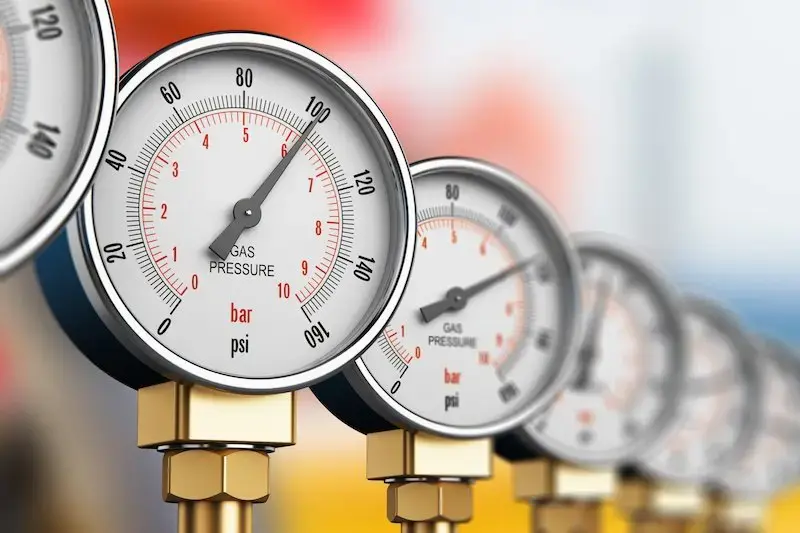In addition to temperature, pressure is one of the most commonly measured physical quantities in industrial applications. However, there are different units of measurement and types of pressure. Below, we explain the fundamental concepts.
What is Pressure?
Pressure describes the force (F) acting on a surface (A) and is denoted by the symbol p:
p = F / A
The SI unit of pressure is Pascal (Pa), named after the French mathematician Blaise Pascal. 1 Pascal equals 1 Newton per square meter (1 Pa = 1 N/m²).
Since the Pascal is quite small, industry often uses bar (1 bar = 100,000 Pa). Depending on the application, other units are also used:
- Pa – Cleanroom technology
- hPa – Meteorology
- mmHg – Medicine (e.g., blood pressure)

The Different Types of Pressure
Depending on the reference point, pressure measurement can be categorized as:
Absolute Pressure
Absolute pressure (Pabs) refers to the absolute vacuum (pressure = 0). Such sensors have a permanently enclosed vacuum at the back of the membrane as a reference.
Typical applications include meteorology, vacuum packaging, and spaceflight.
Gauge Pressure (Relative Pressure)
Gauge pressure sensors measure pressure relative to the current atmospheric pressure (Pamb). The sensor's back is connected via a capillary to the ambient air.
Examples include tire pressure and water level measurement in open tanks.
For instance, if the gauge pressure is 2 bar (e.g., in a car tire) and the ambient pressure is 1 bar, the absolute pressure is 3 bar.
Differential Pressure
Differential pressure sensors measure the difference between two pressures. They have two pressure ports.
Examples include filter monitoring and level measurement in sealed tanks.

Conclusion
To perform precise pressure measurements, it is essential to understand the type of pressure, the application area, and the physical units. Because only with this knowledge can the appropriate sensor be selected—whether for vacuum processes, medical applications, or industrial plant monitoring.
